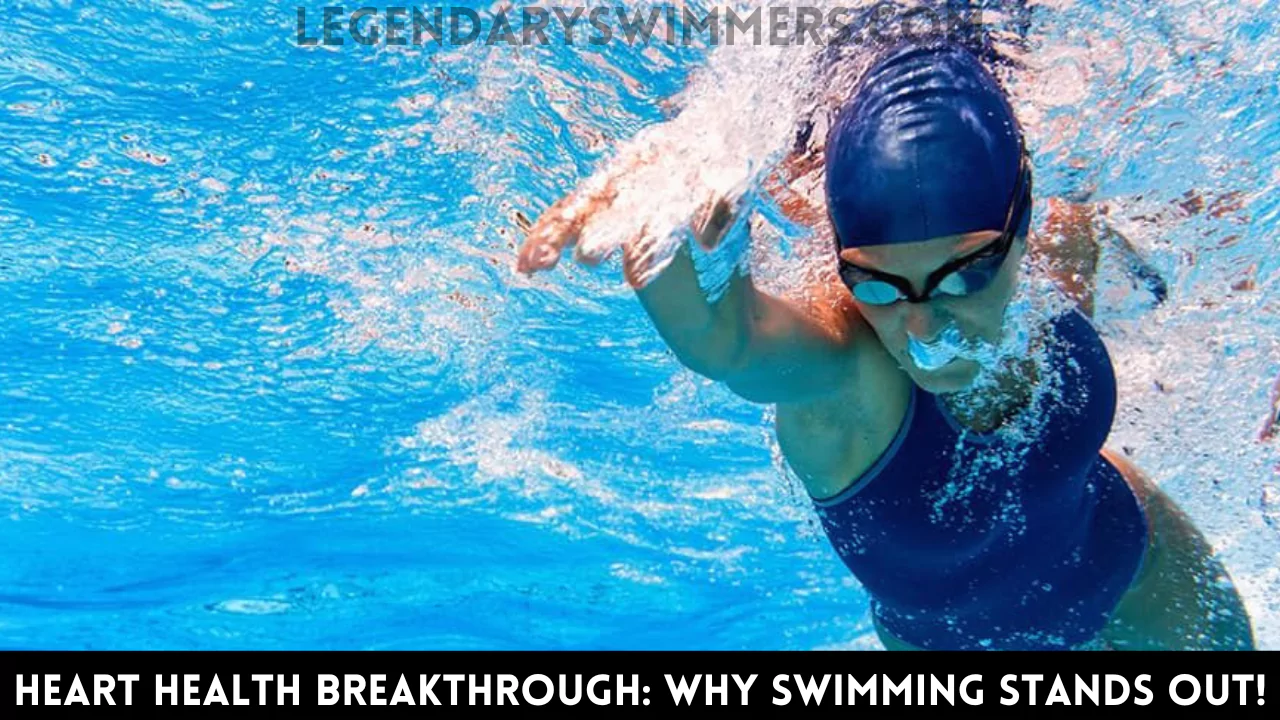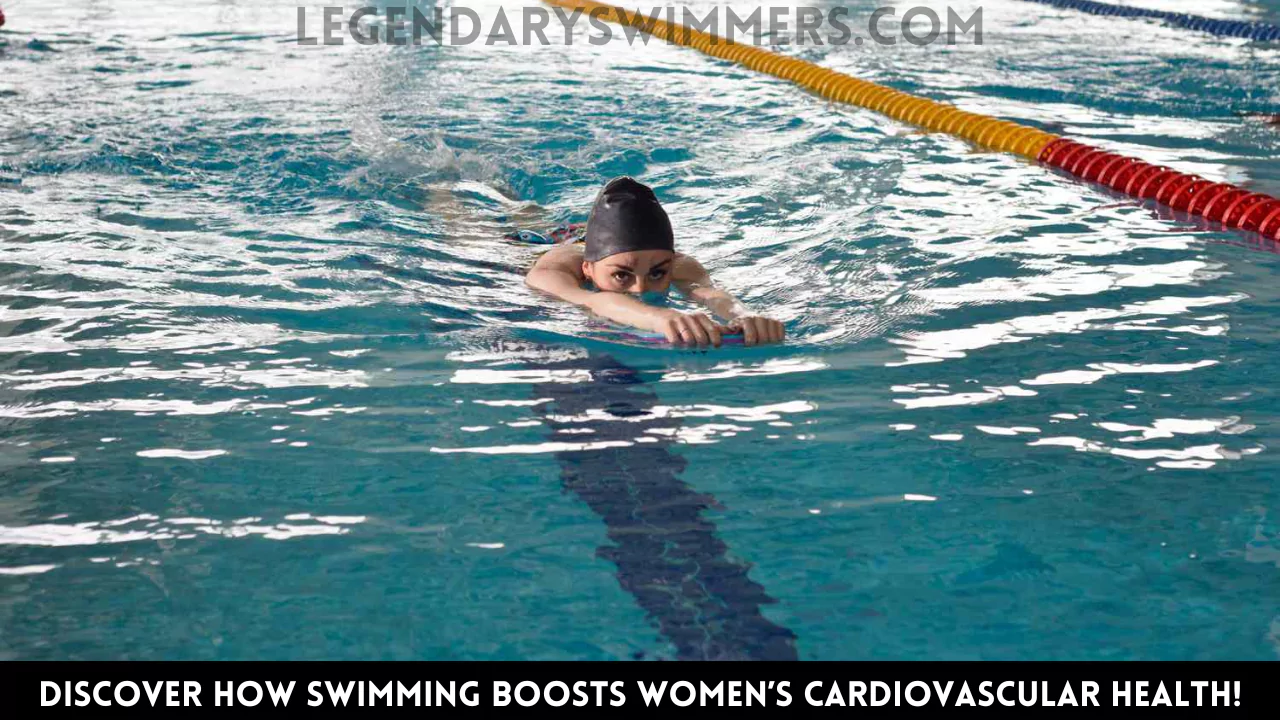
Why Swimming is ideal for Women’s Cardiovascular Health
- Updated:
Swimming is a versatile and enjoyable exercise that offers many benefits, particularly for cardiovascular health. Unlike many other forms of exercise, swimming provides a low-impact, full-body workout that can be especially beneficial for women looking to improve their heart health. In this article, we will explore why swimming is an excellent choice for enhancing cardiovascular health and provide practical tips to help you get started.
Did you know that cardiovascular disease is the leading cause of death among women worldwide? According to the American Heart Association, one in three women will die from heart disease or stroke. This stark statistic highlights the importance of maintaining good cardiovascular health, especially for women.
American Heart Association (AHA) emphasizes the importance of aerobic exercise, like swimming, for improving cardiovascular health. According to their guidelines, regular aerobic exercise strengthens the heart muscle, improves blood circulation, and helps control weight, which is vital for heart health.
Our goal is to explain why swimming should be a key part of any woman’s fitness routine, especially if she’s aiming to boost her cardiovascular health. We’ll cover the specific benefits of swimming, provide tips for getting started, and address common barriers to making swimming a regular and enjoyable part of your life.
The Importance of Cardiovascular Health for Women
Cardiovascular health encompasses the well-being of your heart, blood vessels, and blood pressure. It’s crucial for overall health because it affects how efficiently blood and oxygen are delivered throughout your body. Good cardiovascular health can help prevent diseases such as heart disease, stroke, and high blood pressure.
For women, maintaining cardiovascular health is particularly important due to hormonal changes, higher risks of hypertension, and the added stress of balancing work, family, and personal health.
Challenges Women Face
Women face unique cardiovascular health challenges, including a higher risk of developing heart disease after menopause. According to the American Heart Association, heart disease is the leading cause of death for women, and this risk increases with age and lifestyle factors such as poor diet and lack of exercise.
Why Swimming is an Ideal Choice for Cardiovascular Health

Swimming offers a low-impact workout, ideal for individuals with joint pain or injuries. The buoyancy of water supports up to 90% of your body weight, which minimizes stress on your joints and reduces the risk of injury. This makes swimming an ideal exercise for women of all ages, including those with joint issues or recovering from injuries.
Swimming provides a comprehensive workout, engaging nearly every muscle group in your body. Unlike exercises that target only specific areas, swimming offers a comprehensive workout that helps strengthen both the upper and lower body, which is essential for improving overall cardiovascular health.
Cardiovascular Benefits
Regular swimming has been shown to strengthen the heart muscle, improve cardiac output, and enhance overall heart function. According to a study published in the Journal of Cardiovascular Medicine, swimming regularly can lead to a significant reduction in cardiovascular risk factors, including lower blood pressure and improved cholesterol levels.
Swimming also promotes better blood circulation by improving the efficiency of your heart and lungs. Enhanced circulation helps deliver more oxygen and nutrients to your muscles and organs, which can boost overall energy levels and support cardiovascular health.
Expert Insights: Harvard Health discusses the benefits of swimming as a full-body workout that enhances cardiovascular health. They explain how swimming increases heart rate and builds endurance, which are key components of a healthy cardiovascular system.
Key Benefits of Swimming for Women’s Cardiovascular Health

Swimming is a superb aerobic exercise, meaning it increases your heart rate and breathing while engaging large muscle groups. Regular aerobic exercise is essential for maintaining heart health and improving overall endurance. The American College of Sports Medicine recommends at least 150 minutes of moderate-intensity aerobic activity per week, and swimming is an excellent way to meet this goal.
Weight Management
Maintaining a healthy weight is crucial for cardiovascular health, and swimming can help you achieve this. Swimming is an effective calorie-burning exercise that can help with weight control and reduce the risk of cardiovascular diseases. According to a study published in Obesity Research & Clinical Practice, swimming regularly can significantly contribute to weight loss and improved body composition.
Stress Reduction
Swimming is also known for its stress-relieving benefits. The rhythmic nature of swimming, combined with the soothing effects of water, can help lower stress levels and promote relaxation. This is important for cardiovascular health because chronic stress can contribute to high blood pressure and other heart-related issues.
How to Get Started with Swimming
If you’re new to swimming, start with shorter sessions and gradually increase the duration and intensity. Begin with 15-20 minutes of swimming and focus on mastering basic strokes before progressing to more challenging workouts.
Setting Goals: Setting realistic fitness goals is essential for maintaining motivation. Aim to swim at least two to three times a week, and set specific goals such as improving your lap count or mastering a new stroke.
Finding a Pool
Look for local pools that offer lap swimming or water fitness classes. Many community centers, gyms, and recreational facilities have pools that cater to swimmers of all levels. Make sure the pool is clean, well-maintained, and has the amenities you need.
Choosing the Right Swim Programs:
Consider joining a swim class or group to enhance your swimming experience. Many facilities offer classes tailored to different skill levels, from beginner to advanced, which can help you stay motivated and improve your technique.
Maximizing the Cardiovascular Benefits of Swimming
To reap the full cardiovascular benefits of swimming, consistency is key. Aim to incorporate swimming into your weekly routine and gradually increase the frequency and intensity of your sessions.
Recommended Strokes:
Different swimming strokes offer varying benefits. For cardiovascular health, focus on strokes that elevate your heart rate and engage multiple muscle groups, such as freestyle (front crawl) and breaststroke. These strokes are effective for improving cardiovascular endurance and overall fitness.
Complementary Activities:
While swimming is excellent for cardiovascular health, combining it with other forms of exercise, such as walking or cycling, can provide additional benefits. Cross-training helps to keep your workouts varied and can further enhance cardiovascular fitness.
Overcoming Common Barriers
If access to a swimming pool is a challenge, explore options such as joining a local gym with a pool or checking out public swimming facilities in your area. Many communities offer affordable access to pools and aquatic programs.
To stay motivated, set achievable goals, track your progress, and celebrate your achievements. Consider finding a swim buddy or joining a swim group to add a social element to your workouts and keep you accountable.
Conclusion
Swimming is a powerful exercise for enhancing cardiovascular health, offering benefits such as improved heart function, better circulation, and effective stress relief. Its low-impact nature and full-body workout make it an ideal choice for women looking to improve their heart health.
Why Choose Legendary Swimmers?
Ready to dive into a healthier lifestyle? Start incorporating swimming into your fitness routine today and experience the cardiovascular benefits for yourself. Visit Legendary Swimmers to explore our range of swimming products designed to enhance your aquatic workouts.
Our Recommended Products
Looking to upgrade your fitness routine? Check out our selection of top-notch gear designed to boost your workouts and performance.
 Speedo Unisex-Adult Swim Training Fins Rubber Short Blade
Speedo Unisex-Adult Swim Training Fins Rubber Short Blade
 Diving snorkels
Diving snorkels
 Swimming hand paddles
Swimming hand paddles
FAQs
Q: How often should women swim to see cardiovascular benefits?
A: Aim to swim at least two to three times a week for 30-45 minutes per session to see significant cardiovascular benefits. Consistency is key to achieving and maintaining heart health improvements.
Q: Why is swimming better for cardiovascular health compared to other exercises?
A: Swimming is a low-impact, full-body workout that effectively strengthens the heart and improves circulation while minimizing joint stress. It engages many muscles simultaneously, making it an excellent choice for women seeking comprehensive cardiovascular exercise.
Q: What are the best swimming techniques for improving heart health?
A: Freestyle and breaststroke are recommended for maximizing cardiovascular benefits. These strokes elevate your heart rate and engage multiple muscle groups, contributing to improved endurance and heart health.
Q: How can I stay motivated to swim regularly?
A: Set achievable goals, track your progress, and consider joining a swim group or finding a swim buddy to keep you motivated. Incorporating swimming into your routine and celebrating milestones will help maintain your commitment to cardiovascular fitness.
References:
- American Heart Association. “Recommendations for Physical Activity in Adults.”
- Mayo Clinic. “Swimming: An Excellent Low-Impact Exercise.”
- Harvard Health Publishing. “Swimming for Fitness: Health Benefits and Tips.”
- National Institute on Aging. “Exercise and Physical Activity: Your Everyday Guide from the National Institute on Aging.”

Natasha Nicole Leyva
Hi, I’m Natasha—swimmer, coach, and aquatic fitness enthusiast. My journey began in New Zealand after a professor recommended swimming to help with a knee injury. The low-impact nature of swimming worked wonders, and it quickly became my favorite form of exercise. This passion grew into a thriving swim academy, and soon, requests for aquatic fitness classes started pouring in. After becoming certified, I realized how powerful water workouts could be for recovery and fitness. Now, I share my expertise here to help others experience the benefits of aquatic movement—whether for recovery, fitness, or fun!






